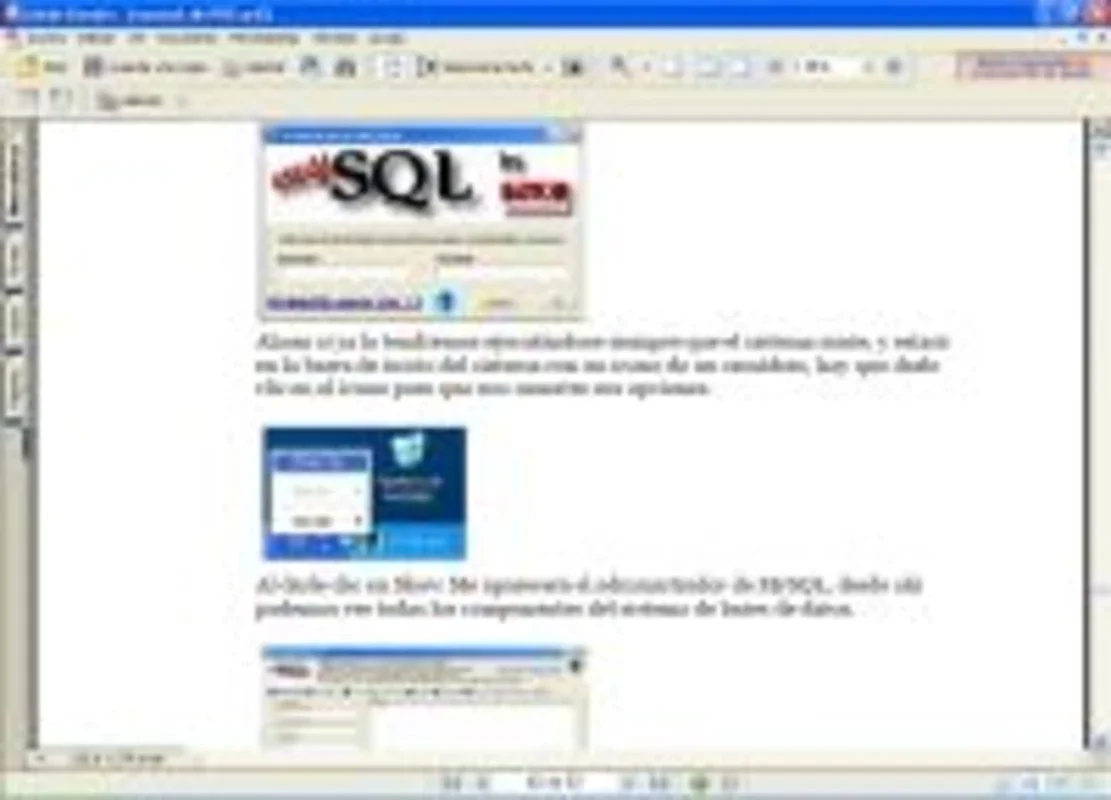Manual de PHP App Introduction
This manual provides a beginner-friendly introduction to PHP programming, guiding you through the fundamentals of web development using PHP and MySQL. Within its concise 52 pages, you'll learn everything from basic PHP syntax to creating and managing MySQL databases. This guide is perfect for those new to web programming or those seeking a quick and easy way to acquire essential PHP skills.
What is PHP?
PHP (Hypertext Preprocessor) is a widely-used, server-side scripting language embedded in HTML. It's known for its ease of use and versatility, making it an excellent choice for beginners. Created by Rasmus Lerdorf in 1994, PHP has evolved significantly over the years, thanks to the contributions of a large and active community. This collaborative effort has resulted in a robust and feature-rich language that continues to power a significant portion of the web.
Key Features of PHP
PHP boasts a range of features that contribute to its popularity:
- Server-Side Scripting: PHP code executes on the server, generating dynamic HTML content that is sent to the user's browser. This allows for interactive web pages and applications.
- Database Integration: PHP seamlessly integrates with various database systems, including MySQL, PostgreSQL, and others. This enables the creation of data-driven web applications.
- Large Community and Support: A vast and active community provides extensive support, documentation, and resources for PHP developers of all skill levels.
- Cross-Platform Compatibility: PHP runs on various operating systems, including Windows, Linux, and macOS, offering flexibility in development environments.
- Open Source: PHP is open-source software, meaning it's free to use, distribute, and modify. This fosters collaboration and innovation within the community.
- Easy to Learn: PHP's syntax is relatively straightforward, making it accessible to beginners. The abundance of online resources and tutorials further simplifies the learning process.
Core Concepts Covered in the Manual
This manual covers the essential concepts of PHP programming, including:
- Variables: Understanding how to declare, initialize, and use variables to store data.
- Data Types: Working with different data types such as integers, floats, strings, and booleans.
- Operators: Using arithmetic, comparison, logical, and assignment operators to manipulate data.
- Control Structures: Employing conditional statements (if-else) and loops (for, while) to control the flow of execution.
- Functions: Creating and using functions to modularize code and improve reusability.
- Arrays: Working with arrays to store collections of data.
- MySQL Database Integration: Connecting to MySQL databases, executing queries, and managing data.
- Basic Web Development Concepts: Understanding the fundamentals of web development, such as HTML, CSS, and HTTP.
Why Choose This Manual?
This manual stands out due to its clear, concise, and beginner-friendly approach. The language used is simple and easy to understand, making it accessible to individuals with little to no prior programming experience. The inclusion of numerous images and diagrams further enhances comprehension, ensuring that even complex concepts are presented in a visually appealing and easily digestible manner. The manual's compact size (52 pages) makes it a perfect resource for those seeking a quick and efficient way to learn the basics of PHP.
Comparison to Other Learning Resources
While many online tutorials and courses exist, this manual offers a distinct advantage: its focused and concise nature. Many online resources can be overwhelming for beginners due to their length and breadth of coverage. This manual cuts through the noise, providing a streamlined path to learning the essential concepts of PHP without getting bogged down in unnecessary details. It's comparable to a well-structured, introductory textbook, but with the added benefit of visual aids to enhance understanding.
Compared to other popular PHP learning resources, this manual prioritizes clarity and simplicity. It avoids complex jargon and focuses on practical application, making it ideal for those who prefer a hands-on, practical approach to learning.
Getting Started with the Manual
The manual is designed to be user-friendly and easy to navigate. Each chapter builds upon the previous one, providing a logical and progressive learning experience. The clear explanations and visual aids ensure that even beginners can grasp the concepts quickly and efficiently. The inclusion of practical examples and exercises allows readers to apply what they've learned and solidify their understanding.
Conclusion
This manual serves as an excellent starting point for anyone interested in learning PHP programming. Its concise yet comprehensive approach, combined with its clear and simple language, makes it an ideal resource for beginners. The inclusion of numerous images and diagrams further enhances the learning experience, ensuring that even complex concepts are presented in an easily understandable manner. By the end of this manual, readers will possess a solid foundation in PHP programming, enabling them to embark on their web development journey with confidence.
This manual is a valuable tool for anyone looking to acquire basic PHP knowledge and start developing dynamic websites. Its straightforward approach and visual aids make learning enjoyable and effective, setting the stage for further exploration of this powerful programming language. The focus on practical application ensures that readers are well-equipped to apply their newly acquired skills to real-world projects.
